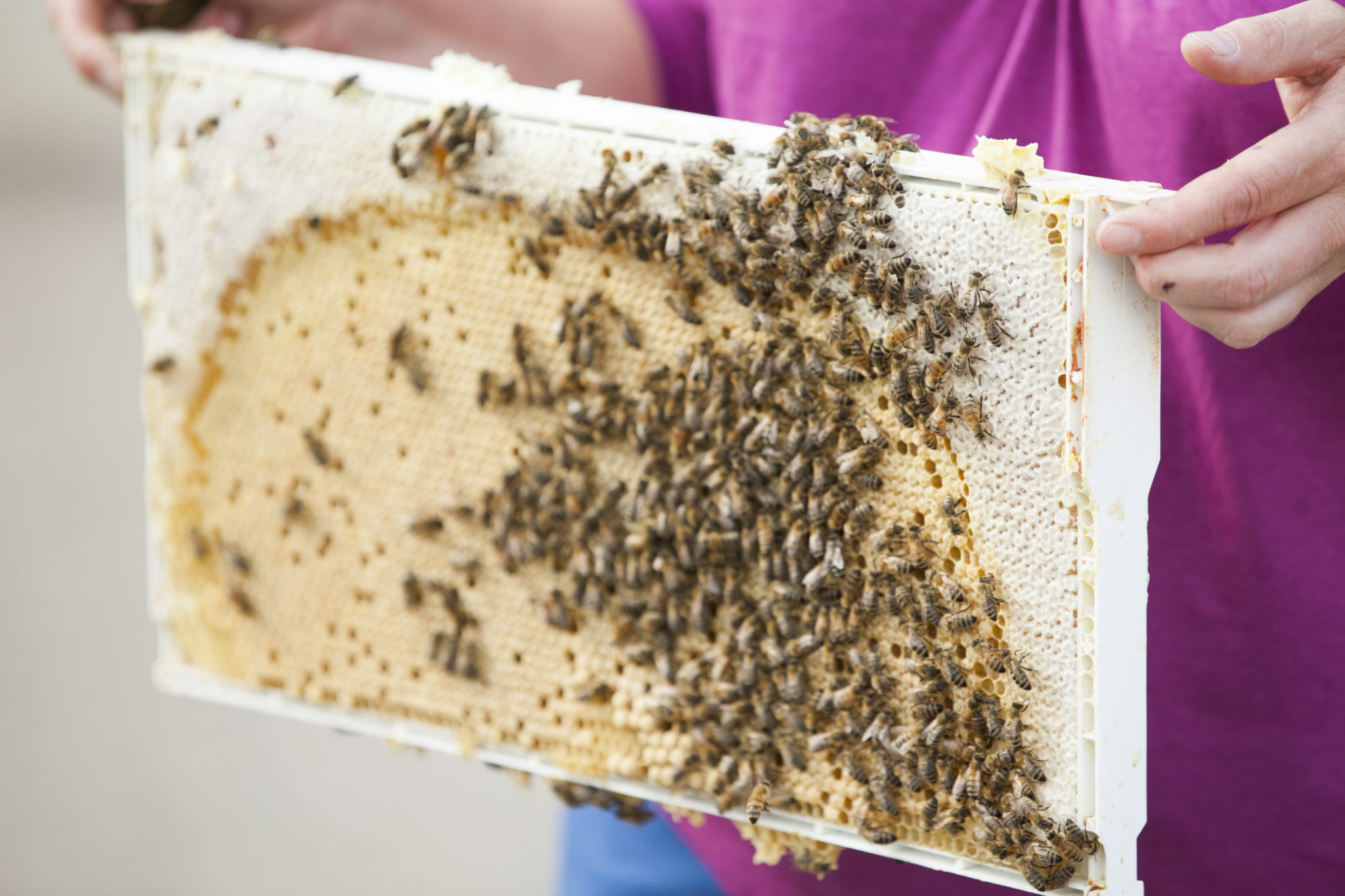Love them or hate them, bees play an important role in our ecosystem. As the world’s most important pollinators, honey bees are responsible for the growth of flowers, trees and other plants, which in turn, serve as food and resources for other creatures (including us).
Our growing urban landscapes make it difficult for city bees to forage in a concrete jungle. More and more organizations (and home gardeners) recognize this and are doing everything they can to encourage pollination in their communities. What can you do? Help the bees by adding to the shrinking inventory of flower-rich habitat in your area by planting a garden rich in pollinating plants. In return, the bees will pollinate your plants—providing a bountiful harvest of fruits, seeds and vegetables.
Here are some helpful tips as you grow your at-home bee garden:
- Eliminate pesticides or use natural pesticides wherever possible.
- Plant flowers based on the bees you wish to attract. Bumblebees prefer single-flower tops like marigolds because of their big landing pads. Native bees are attracted to plants that have many small flowers on one stem.
- Plant at least three different types of flowers in your bee garden to ensure there are blooms throughout as many seasons as possible.
- Skip any ‘hybrid’ plants which have been altered to not seed and don’t produce pollen.
- Make a bee bath. Bees need a place to access fresh and clean water. Fill a shallow container of water with pebbles or twigs for the bees to land on.
- Don’t mulch everywhere. Many species of native bees nest in small holes in the ground and need unmulched areas to dig.

At the Edmonton Convention Centre, we create a remarkable gathering place for all our guests—even our bees and butterflies!
Here are some of the ways we make our outside spaces perfect for pollinators:
- In 2016, the Edmonton Convention Centre welcomed our newest tenants, a hive of urban bees. In the summer months, our colony grows to approximately 100,000 bees.
- Our butterfly garden is rich with milkweed plants. The increased use of pesticides is putting the milkweed at risk of becoming extinct. With it, so too is the monarch butterfly which relies on the plant as its only food source. We are trying to help preserve the monarch population by attracting them to our region with a safe place to eat and reproduce.
- Catmint is a favourite food source of our bees. It blooms early in the year and helps our bees get an early start to honey making and reproduction after and long, cold winter. It also gives our honey a unique minty undertone.
- At the beginning of summer, our beekeeper Patty will top-off our colony with extra boxes to give the growing population of bees more space to store their honey. In the winter, we make their home smaller and insulate the boxes so they can keep warm for winter swarming.

We are always eager to show off our buzzing friends and take guests on a bee watching safari. The next time you stop by the Edmonton Convention Centre, we encourage you to visit our bees or talk to our team about taking a bee tour!
Return to News

